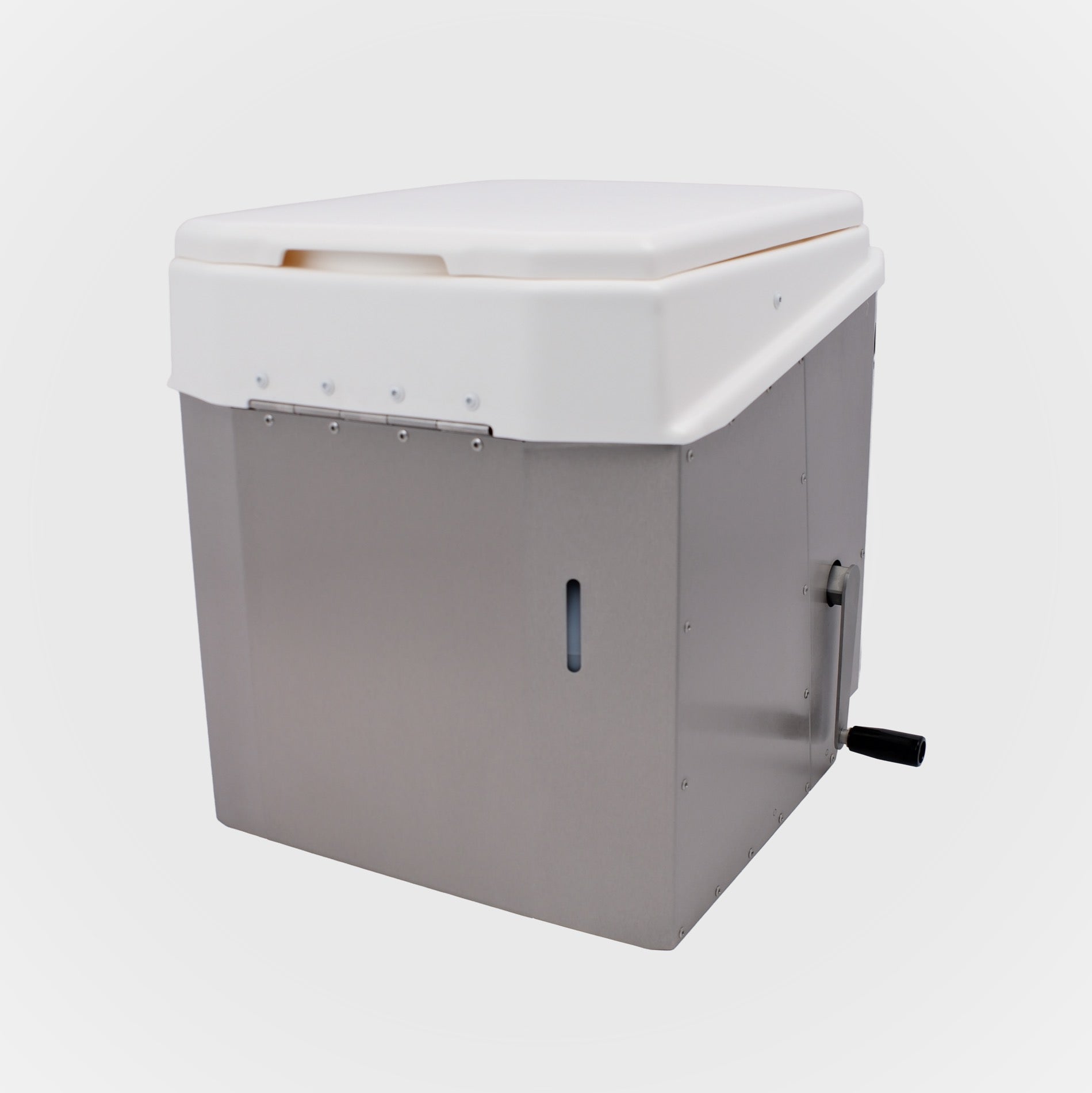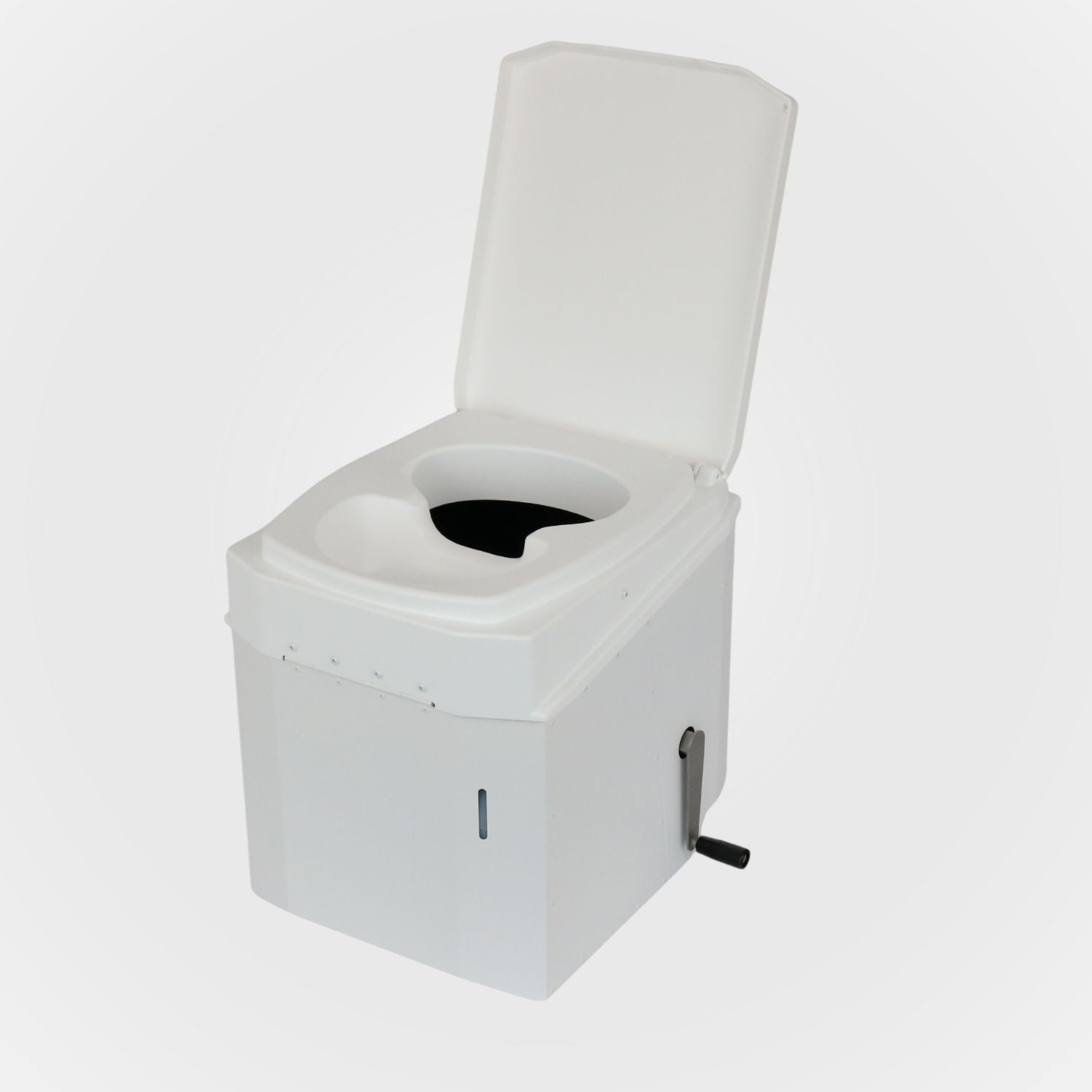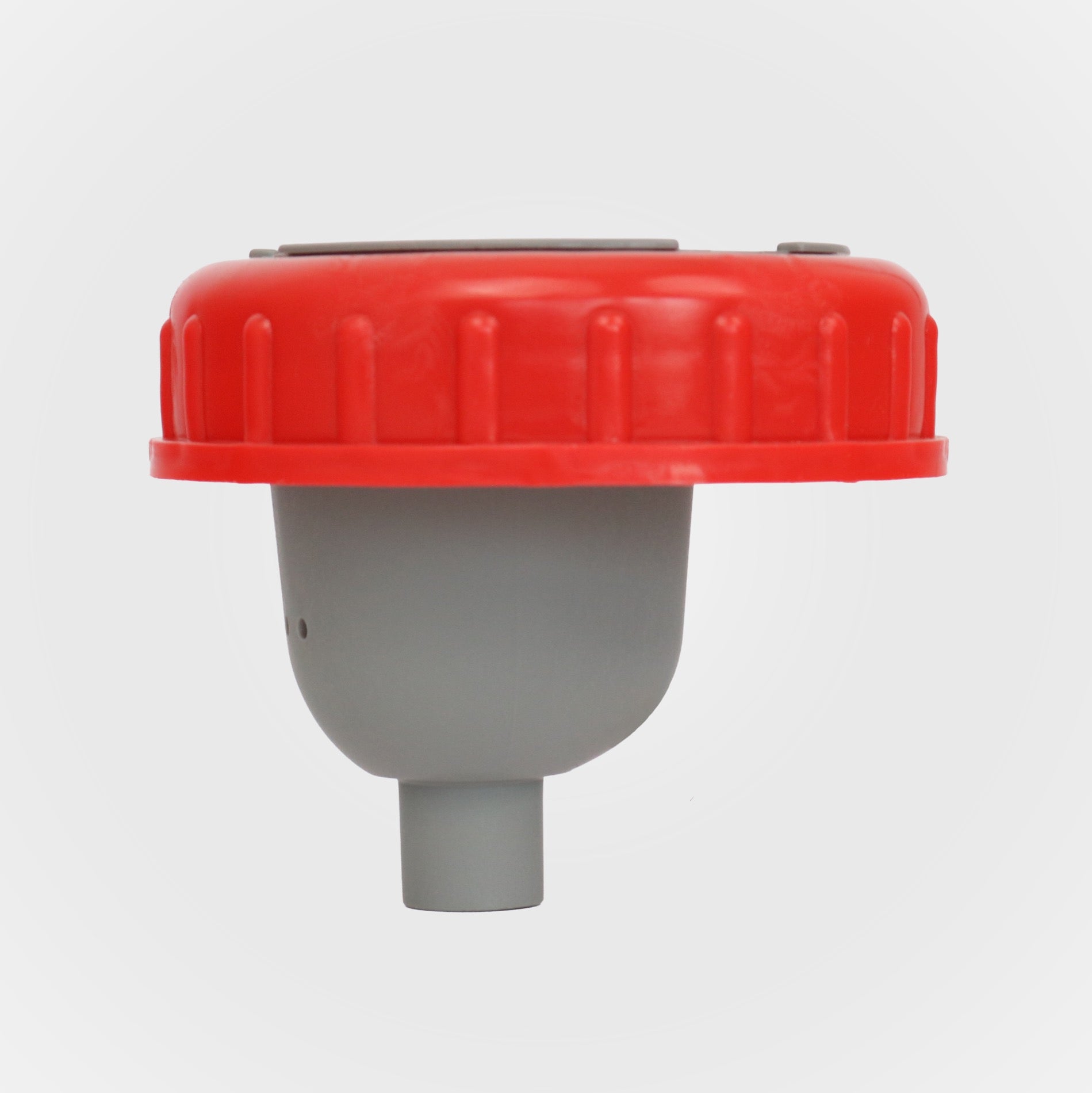When traveling by sailboat or similar vessel, a good marine toilet is a true lifesaver. It provides significantly more comfort, hygiene, and independence on board. This is one reason to retrofit a marine toilet. In this article, you'll learn which toilets are available, what you should consider during installation, and which solution best suits your boat.
That's why retrofitting a boat toilet is worthwhile.
With a boat toilet, you are completely independent of harbor facilities on longer trips, when anchoring, or in remote bays, because you always have your own toilet with you. That's pure comfort and hygiene.
The good thing is that modern onboard toilets are particularly compact, take up little space, are easy to use and, depending on the model, can even function completely without chemicals or water.
Disposing of waste is also hygienic and easy thanks to the clever toilet system. All of these are good reasons to retrofit a boat toilet on board, so nothing bothers you on your trip.
Onboard toilets – These are the types of toilets available
There are several boat toilets to choose from. They differ primarily in their size and ease of use. The following are among the most common models.
- Chemical toilet
- Dry toilet
- electric onboard toilet
- mechanical onboard toilet
Chemical toilet
The portable chemical toilet requires no permanent installation and is particularly suitable for small boats or occasional use. It consists of a urine and solids container that uses chemicals to combat odors.
Advantages:
- Inexpensive to purchase
- Flexible application
- No power connection required
Disadvantages:
- Odor formation medium to high
- Disposal via the tank is complex.
- Chemicals are harmful to the environment.
- Consumes water
- Regular refilling of the chemicals is necessary.
dry composting toilet
The dry toilet is a particularly sustainable solution. It separates urine and solids and requires no water or chemicals, making it very environmentally friendly. Thanks to its separation system, odor filter, and compact design , a dry toilet is also space-saving, odor-free, and requires little maintenance. This makes it perfect for sailboats, yachts, and campers.
Advantages:
- It requires no water, chemicals, or electricity.
- Minimal odor formation
- Very environmentally friendly
- Easy cleaning
- Low maintenance
Disadvantages:
- Higher purchase price
- Installation should be carefully planned.
- Solid materials must be disposed of separately.
Electric onboard toilet
An electric marine toilet offers maximum convenience at the touch of a button: The integrated pump with macerator grinds up the waste and transports it to the separate holding tank. Since you need a power connection for this, an electric marine toilet is only suitable if your boat has a good electrical system.
Advantages:
- High ease of use
- Low water consumption
- Minimal odor formation
- Perfect for larger boats with a power supply
Disadvantages:
- More expensive to purchase and install
- electricity dependent
- Makes noise when chopped
- Maintenance of electronics and pump required
Manual mechanical onboard toilet
This type of marine toilet is operated by a hand pump. On average, about 15 pumps are needed to pump the wastewater overboard or into the holding tank. It requires no electricity at all, but does require some physical effort.
Advantages:
- Independent of electricity
- Cost-effective
- Simple in design and manual handling
Disadvantages:
- Operating the job is physically demanding.
- Prone to errors if the lever is in the wrong position
- Odor formation is in the medium range
- Consumes water
- Maintenance and care of pumps and seals are necessary.
Planning a retrofit correctly – here's how
Before you retrofit a boat toilet, you should ask yourself a few important questions: How much space do you have available on board? Do the size, seat height, and design of the toilet suit your boat?
The installation location is also important: Is the toilet above or below the waterline? Depending on the model, you'll also need a suitable holding tank, adequate ventilation, a powerful odor filter, and durable seals. If you opt for an electric marine toilet, it will also need a suitable power supply.
You should also keep an eye on topics such as maintenance, cleaning, wastewater connections and the availability of spare parts, so that your onboard toilet functions reliably and flawlessly for as long as possible.
Tips and tricks for the onboard toilet
When choosing a boat toilet, make sure it has a well-designed waste separation system. This is especially important for dry toilets, as it greatly simplifies waste disposal in everyday harbor life. Solids can be conveniently and hygienically disposed of in a compost bag, while urine drains separately.
This makes using the toilet simple, clean, and chemical-free. It's also good to know that installing a composting toilet generally doesn't require a permit. Nevertheless, you should adhere to certain standards, such as ISO 8099 or HELCOM guidelines, as these provide excellent guidance regarding waste tanks and proper ventilation. Good ventilation is essential – it's the only way to prevent unpleasant odors.
BioTioo – Environmentally friendly composting toilets for your boat
BioTioo's composting toilets offer three key advantages: they are comfortable, hygienic, and sustainable. The models operate entirely without water or chemicals, are exceptionally hygienic, easy to clean, and ideal for use on sailing yachts, houseboats, or campervans.
Thanks to their compact design, composting toilets also fit on smaller boats with limited space, while the sophisticated ventilation and separation system ensures virtually odor-free operation. You can choose between two models:
- BioTioo 1.0: The robust classic, particularly suitable for permanent installation.
- BioTioo 2.0: The comfortable and flexible successor that is even easier to clean.
One thing is certain: with BioTioo, you combine sustainability with maximum comfort and the best hygiene at sea. So don't hesitate and see for yourself!






